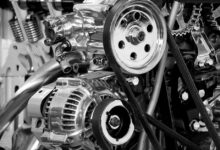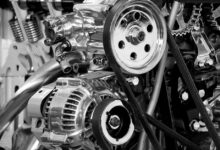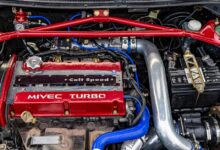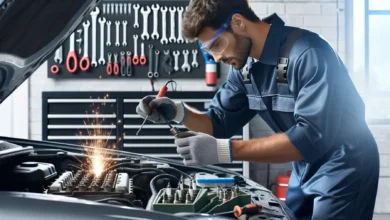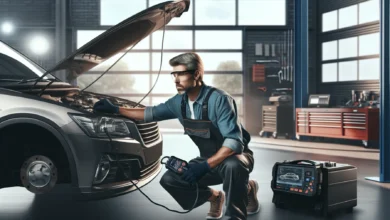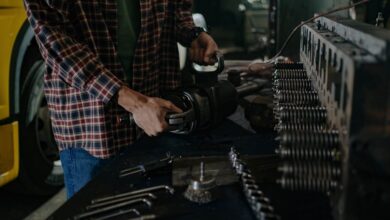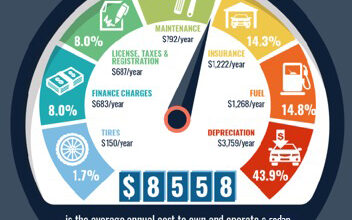Engine Timing Belt: Complete Guide to Replacement, Maintenance, and Troubleshooting
Sponsored Ads
When I think about what keeps my car running smoothly, the timing belt in the engine always comes to mind. This simple yet crucial part makes sure all the moving pieces inside the engine work in perfect harmony. If it fails, I know my engine could face severe damage and expensive repairs.
I’ve learned that paying attention to the timing belt isn’t just about avoiding breakdowns; it’s also about maintaining the vehicle’s overall health and well-being. It’s about keeping my car reliable and safe every time I hit the road. Understanding what a timing belt does and when to replace it can save me a lot of trouble in the long run.
Understanding the Engine Timing Belt
The engine timing belt function determines how precisely the camshaft and crankshaft synchronize inside my engine. Noticing how timing affects vehicle operation helps me recognize its value.
What Is an Engine Timing Belt?
The engine timing belt is a reinforced rubber or composite toothed belt that coordinates the rotation of the crankshaft and camshaft. Toothed construction provides a grip that prevents slipping under tension—manufacturer specifications often list materials such as high-strength rubber, fiberglass, or Kevlar for timing belt construction.
Why the Timing Belt Is Important
The importance of the timing belt lies in keeping the engine’s valves and pistons operating in sync without collision or misfire. Internal combustion engines, including 4-cylinder, V6, and V8 types, rely on this synchronization for efficient power delivery and fuel economy. Disrupted timing leads to poor performance and, in interference engines, can result in severe component damage.
Signs Your Timing Belt Needs Replacement
Timing belt replacement warning signs include engine misfires, ticking noises, rough idling, or sudden engine failure. Visual inspection often reveals fraying, cracking, or missing teeth. Manufacturers recommend checking the timing belt condition every 60,000 to 100,000 miles, as specified in the owner’s manual. Ignoring these signs risks engine breakdown and expensive repairs.
Materials and Tools Needed

Accurate timing belt replacement depends on having the correct tools and gear. I choose these items to ensure efficiency and safety throughout the process.
Essential Tools
- Socket set for removing engine covers and pulleys
- Torque wrench for precise tightening of bolts to manufacturer specifications
- Screwdrivers (flathead and Phillips) for detaching clamps and minor components
- Break the bar to loosen the tight crankshaft bolts
- A timing light or alignment tool for verifying proper crankshaft and camshaft alignment after installation
- Jack and Jack stands for stable vehicle lifting and support
Recommended Safety Gear
- Mechanic gloves to protect my hands from debris, sharp edges, and chemicals
- Safety goggles for shielding my eyes from dust, metal shavings, or coolant splashes
- Long-sleeve shirt and pants to reduce exposure to engine heat and moving parts
I consistently use these engine timing belt tools and safety items to maintain process accuracy and minimize risk.
Preparing for Timing Belt Replacement
Efficient timing belt replacement starts with a thorough setup. I create a safe, organized workspace to avoid errors and reduce risk before moving forward.
Locating the Timing Belt
I locate the timing belt by consulting my vehicle’s manual for engine layout diagrams. Most engines position the timing belt behind the upper engine covers near the front of the engine block. I scan for covers marked with manufacturer labels or fasteners, since these typically shield the timing system components. Example vehicles—like most Honda or Toyota models—use plastic covers secured by bolts near the camshaft area.
Disconnecting the Battery
I disconnect the battery to eliminate any chance of accidental electrical shorts or engine cranking. I detach the negative terminal first, followed by the positive terminal, for maximum safety. I isolate the cables from the battery posts to prevent reconnection while working near critical wiring or electronic sensors.
Making Reference Marks
I make reference marks on the camshaft sprocket, crankshaft pulley, and timing cover using a white paint marker or chalk. I ensure that each mark aligns with the manufacturer’s timing marks, if present; otherwise, I create clear marks that are easy to realign during installation. I document the mark positions with a quick photo or sketch if the layout is complex for my specific engine model.
Step-By-Step Guide to Replacing an Engine Timing Belt
I take consistent precautions and follow a methodical process to replace an engine timing belt. I complete each step in sequence to secure alignment and avoid engine damage.
Removing Engine Components
I remove peripheral engine components to reach the timing belt system efficiently. I start by detaching the engine covers and accessory belts, such as serpentine belts, using a socket set. I unbolt and remove the crankshaft pulley with a breaker bar and puller. I disconnect brackets or mounts near the timing cover for increased access. I organize fasteners and parts in labeled trays for accurate reassembly.
Accessing the Timing Belt
I expose the timing belt by removing the timing cover and checking for debris or residual gasket material. I inspect all pulleys and gears for alignment relative to reference marks created earlier. I verify that the engine rests at top dead center to preserve correct timing.
Loosening the Tensioner
I locate the belt tensioner assembly next to the timing belt path. I use a wrench or socket to rotate or compress the tensioner, which relieves belt tension while maintaining the sprocket alignment. I secure the tensioner in the released position if it features a locking pin or detent.
Removing the Old Timing Belt
I slide off and remove the old timing belt without disturbing the sprocket and gear positions. I inspect the belt for wear patterns, missing teeth, or oil contamination, which serves as supporting evidence for scheduled maintenance. I avoid rotating the crankshaft or camshaft once the belt is off to prevent misalignment.
Installing the New Timing Belt
I route the new timing belt onto the camshaft, crankshaft, and accessory pulleys, ensuring that every tooth and groove aligns with earlier marks. I ensure that the belt sits snug around each gear without slack before releasing the tensioner. I use only manufacturer-approved belts for specific engine models to guarantee compatibility.
Adjusting Belt Tension
I restore the tensioner’s pressure against the timing belt to provide the correct amount of tension, confirming it by pressing midway between the pulleys and checking for minimal deduction, as per the manufacturer’s specifications. I rotate the engine manually through two complete revolutions and recheck alignment marks. I re-tension the belt if any misalignment occurs or if it shows excessive play.
Reassembling Engine Components
I reinstall the timing cover, crankshaft pulley, accessory belts, and all removed brackets or mounts, reversing the order used for disassembly. I reconnect the electrical connections and the battery terminal. I verify that all bolts meet the torque specifications listed in the service manual. I check for smooth engine cranking before securing final covers and components.
Tips and Best Practices
Adhering to proven engine timing belt tips and best practices brings reliable performance and reduces long-term repair risks. I combine alignment accuracy, optimal lubrication, and ongoing maintenance for consistent results.
Ensuring Proper Alignment
Achieving precise camshaft and crankshaft alignment at replacement creates consistent engine timing. I align factory reference marks with the timing belt teeth before tensioning the belt. I prevent misfires or valve damage by double-checking the mark alignment after installing the new belt. I use a straightedge or alignment tools for further verification if the marks are difficult to see or ambiguous.
Lubrication Advice
Maintaining a dry timing belt surface preserves belt integrity and system efficiency. I avoid applying oil or grease to the belt, pulleys, or tensioners, as manufacturers such as Gates and Continental (source: manufacturer service bulletins) specify that lubricant can degrade the belt material and attract debris. I inspect seals and gaskets for leaks before reassembly to prevent contaminating the belt with oil or coolant, which can shorten its lifespan and increase the risk of failure.
Maintenance Tips for Longevity
Extending the life of the timing belt involves a combination of proactive care and regular checks. I inspect the belt every 12 months or at each oil change for fraying, glazing, or missing teeth. I replace tensioners, pulleys, and water pumps during timing belt service intervals as recommended in the vehicle manual, since worn components accelerate belt wear. I maintain a log of service dates and installed parts to track intervals and prevent forgotten maintenance. I use only OEM or high-quality aftermarket parts for longevity and system compatibility.
Common Issues and Troubleshooting
Engine timing belt repairs sometimes introduce complications or reveal underlying issues. Precision in troubleshooting ensures reliability and engine lifespan.
Dealing with Misalignment
Misalignment in the engine timing belt disrupts synchronization between the camshaft and crankshaft. Symptoms commonly include rough idling, engine misfires, poor acceleration, and an illuminated check engine light. I verify the alignment marks on both the crankshaft pulley and camshaft sprocket, comparing the reference marks made during disassembly with the original manufacturer’s positions. If the teeth on the belt or pulleys appear uneven or damaged, I will replace the affected parts. Realigning both components and retensioning the belt corrects most minor misalignment, provided no internal engine damage has occurred.
What to Do if the Engine Won’t Start
An engine that won’t start after a timing belt replacement often results from incorrect alignment or a loose or unseated belt. I inspect the timing mark alignment first, rotating the crankshaft manually with a ratchet for two full turns and observing the marks on both the crank and cam pulleys. If the marks do not realign correctly after two revolutions, I reposition the belt. Additional causes that I check include disconnected sensors, unfastened ground cables, or missed electrical connections during reassembly. In interference engines, I listen for abnormal mechanical resistance that might signify internal damage, halting troubleshooting if detected, and consulting an engine specialist.
Identifying Unusual Noises After Replacement
Unusual noises after a timing belt replacement indicate issues with the installation or condition of the component. Clicking or knocking suggests the belt was installed with excessive tension or that the pulleys are not adequately lubricated. Squealing indicates slippage, generally from under-tensioning or a worn tensioner pulley. I check torque values on tensioners and guides, using a torque wrench to compare with manufacturer specifications. Grinding or rattling may mean debris was left behind during reassembly, so I inspect the timing cover area for loose fragments. Tightness and belt path are confirmed by referencing diagrams from the service manual. If any components display wear from the previous timing belt failure, I will replace them immediately.
When to Seek Professional Help
Identifying when to seek professional help ensures that timing belt replacement and repair are maintained at optimal safety and accuracy. I request expert assistance in these scenarios:
- Complex engine configurations, such as twin-cam engines, integrated timing systems, and those with limited clearance, require specialized knowledge and advanced tools for correct belt installation.
- Damage to engine components: Bent valves, broken tensioners, or damaged oil seals often accompany severe timing belt failures, making precise repairs necessary to prevent further damage.
- Lack of technical experience: Inexperience with engine timing, disassembly, or alignment increases the risk of errors that may lead to costly engine damage.
- Persistent abnormal symptoms: Continued engine misfires, loud ticking noises, or abnormal vibrations after a timing belt replacement indicate underlying issues needing diagnostic assessment by a certified mechanic.
- Warranty preservation requirements: New vehicles and some aftermarket timing belts require installation by certified technicians, as specified by the manufacturer, to maintain warranty coverage.
By contacting certified technicians during these scenarios, I reduce the risk of improper repairs, save time on diagnosis, and ensure my timing belt system operates reliably.
Conclusion
Staying proactive with your engine timing belt pays off in both performance and peace of mind. I always make it a priority to check the condition of my belt and follow the recommended service intervals. When it’s time for replacement, I gather the right tools and take every safety precaution to avoid costly mistakes.
If you ever feel unsure during the process or face unexpected issues, don’t hesitate to consult a professional. Taking these steps keeps your engine running smoothly and helps you avoid major headaches down the road.
Frequently Asked Questions
What is a timing belt, and why is it essential for my car?
A timing belt is a critical engine component that synchronizes the rotation of the crankshaft and camshaft. This coordination allows the engine’s valves and pistons to move in harmony, ensuring efficient power delivery, optimal fuel economy, and preventing internal engine damage.
How often should I replace my car’s timing belt?
Most manufacturers recommend replacing the timing belt every 60,000 to 100,000 miles. However, please refer to your vehicle’s manual for the exact interval and inspect the belt regularly for any signs of wear.
What are the signs that a timing belt needs to be replaced?
Common signs include ticking noises from the engine, frequent engine misfires, rough idling, and visible signs of wear such as fraying, cracking, or glazing. If you notice any of these symptoms, please inspect or replace the belt as soon as possible.
What happens if I ignore a worn timing belt?
Ignoring a worn timing belt can lead to engine misfires, loss of power, severe engine damage—especially in interference engines—and costly repairs. Regular maintenance prevents unexpected breakdowns and ensures safety.
Can I replace my timing belt myself?
Yes, if you have mechanical experience and the right tools are available. Key steps include creating a safe workspace, disconnecting the battery, making alignment marks, and carefully following the manufacturer’s instructions. If you’re unsure, it’s recommended to seek professional service.
What tools and safety equipment are needed to replace a timing belt?
Essential tools include a socket set, torque wrench, screwdrivers, breaker bar, timing light or alignment tool, jack, and jack stands. Safety equipment should consist of mechanic gloves, safety goggles, and long-sleeved clothing to protect against debris and engine heat.
How do I ensure proper alignment of the timing belt?
Make clear alignment marks on the camshaft sprocket, crankshaft pulley, and timing cover before removal. During installation, match these marks precisely to ensure the engine’s timing remains correct and to avoid misfires or valve damage.
Is lubrication needed for a timing belt?
No, do not lubricate the timing belt. Oil or grease can degrade the material and attract dirt, leading to premature wear or failure. Could you keep the timing belt and its surrounding area clean and dry?
What should I do if my engine won’t start after replacing the timing belt?
Could you double-check that the timing marks are correctly aligned and all electrical connections are secure? A misaligned belt or loose connections are common reasons for starting issues after replacement.
When should I seek professional help for a timing belt replacement?
Consult a certified technician if your engine has a complex layout, you lack technical expertise, there’s visible damage to engine parts, abnormal symptoms persist, or you need to maintain your warranty. Professionals ensure accurate repairs and reliability.



